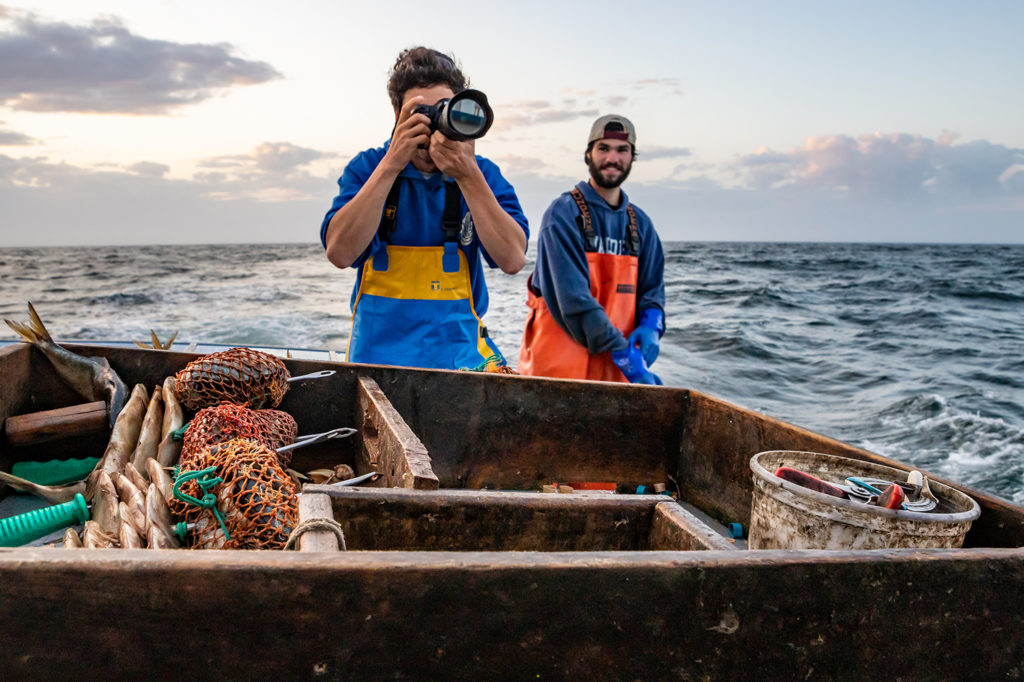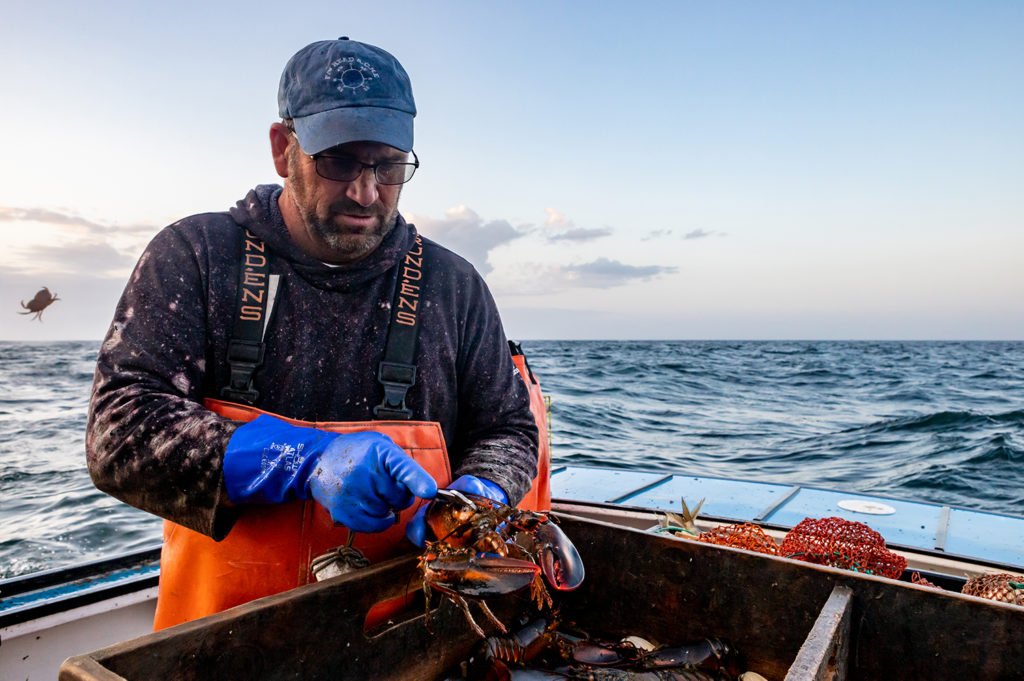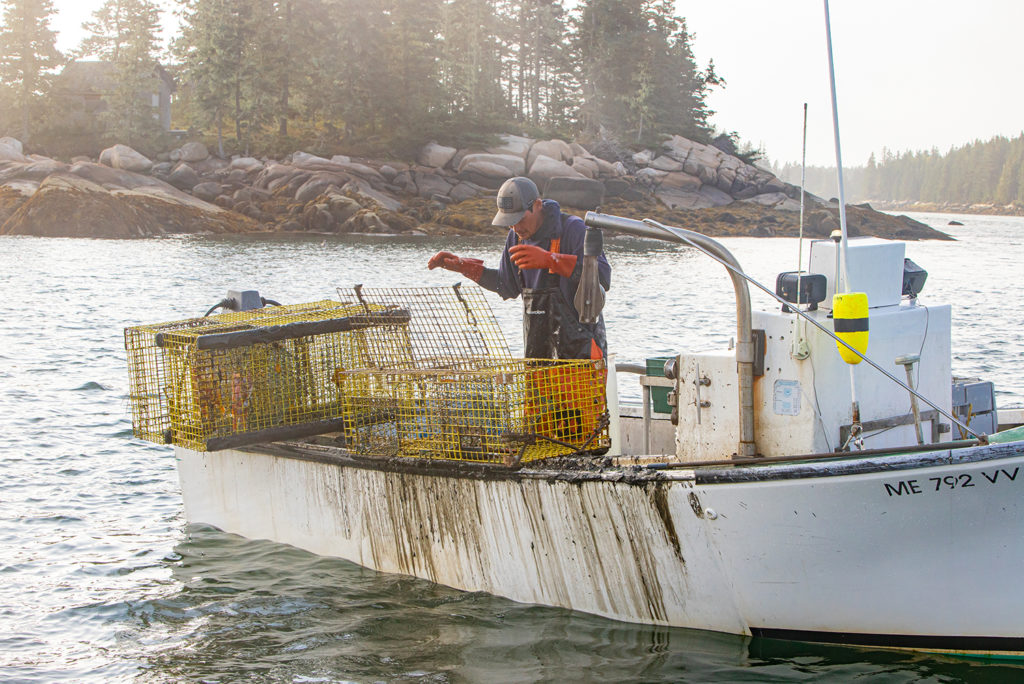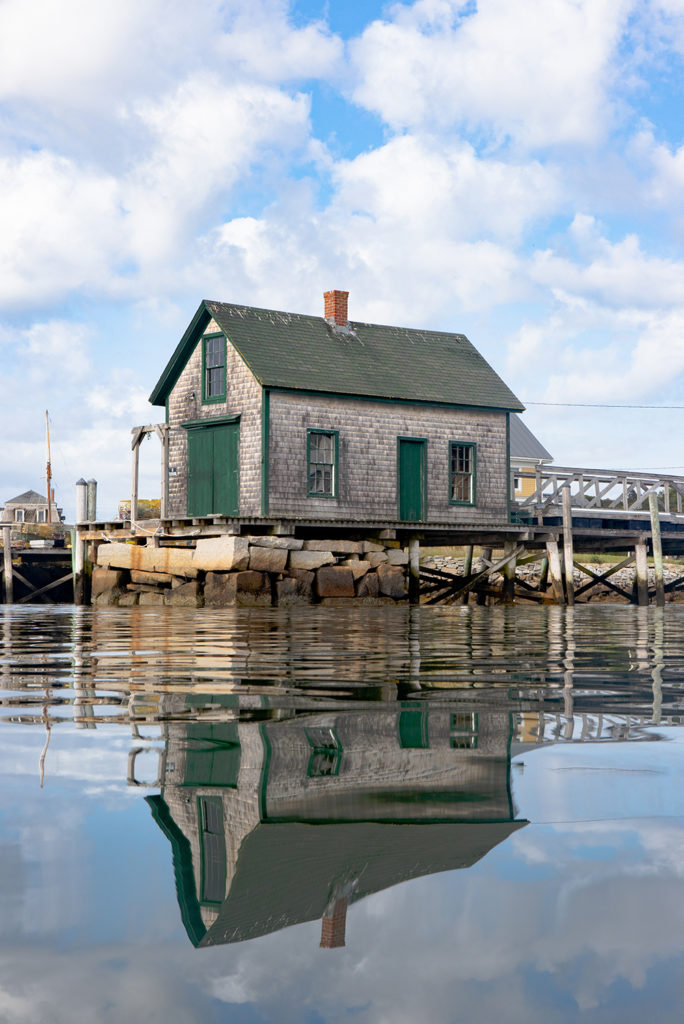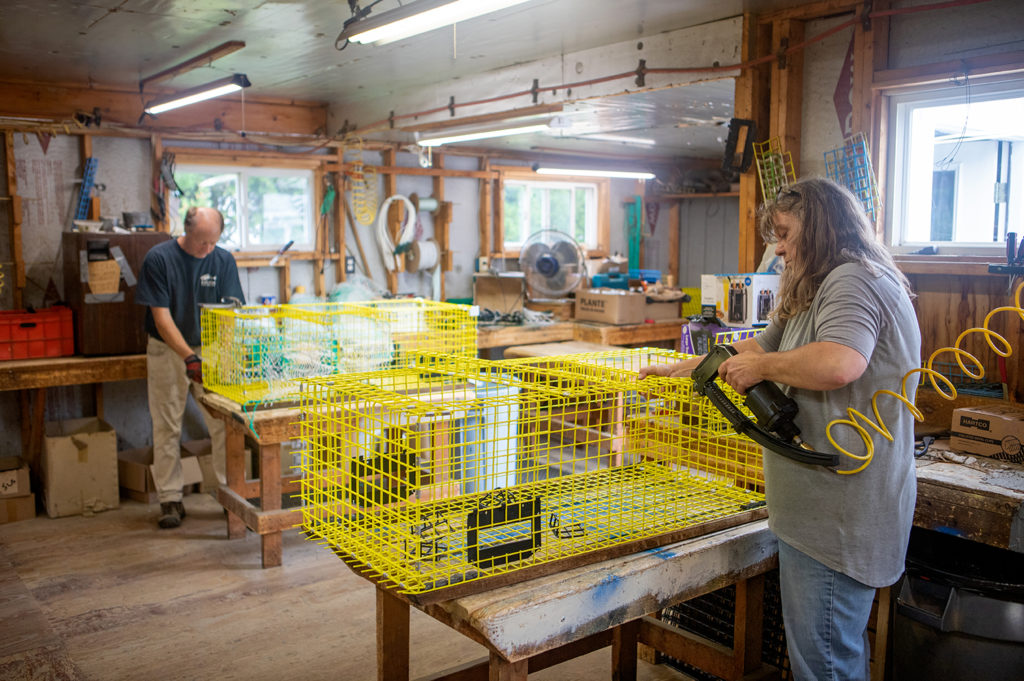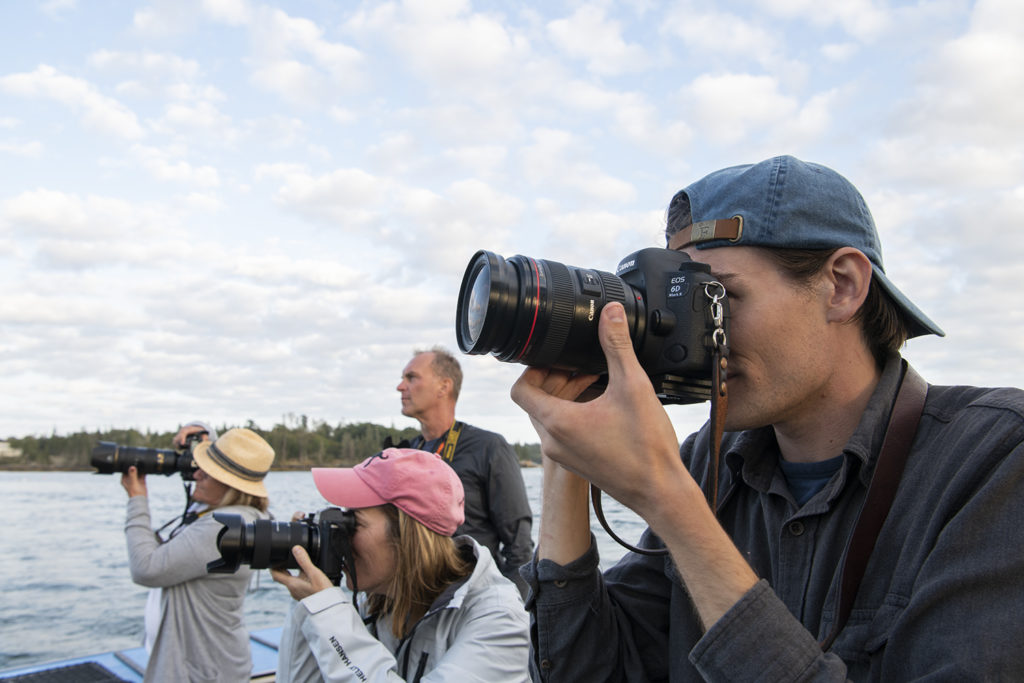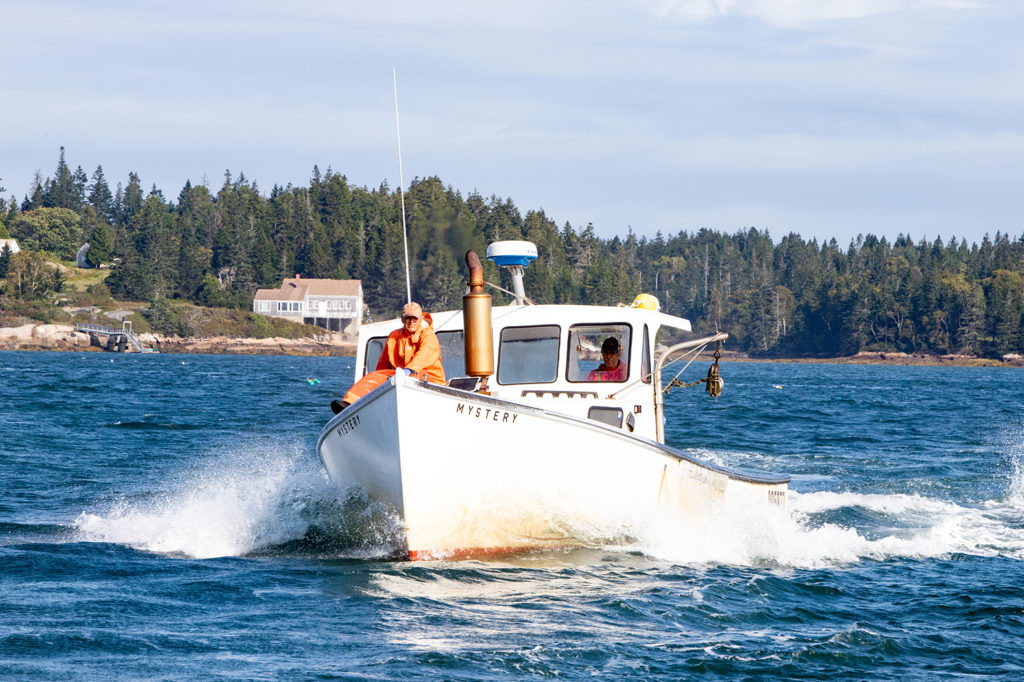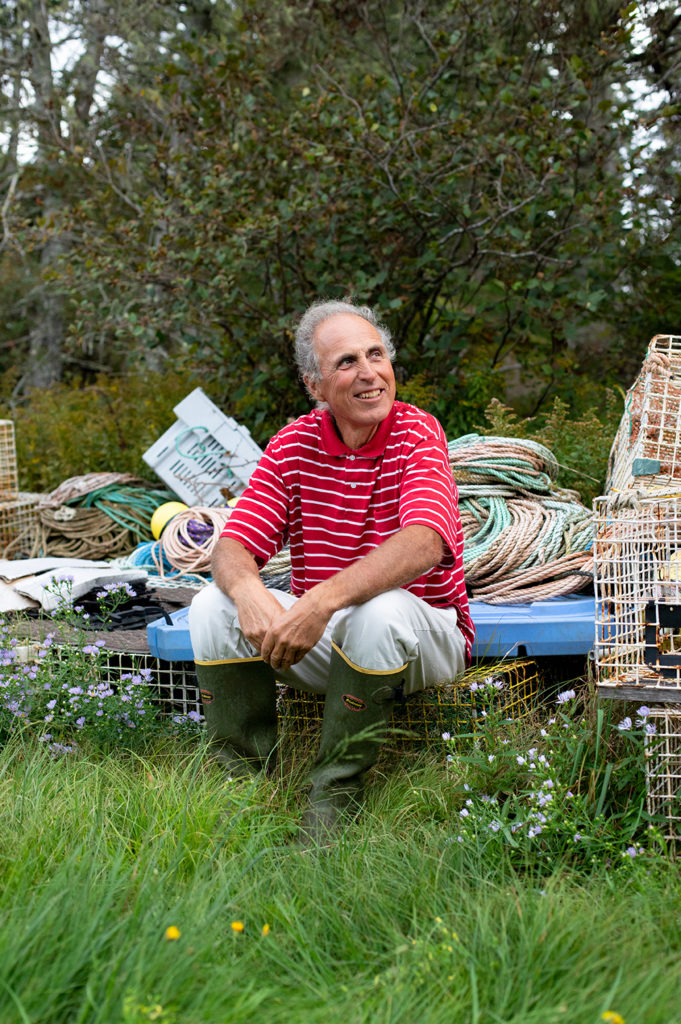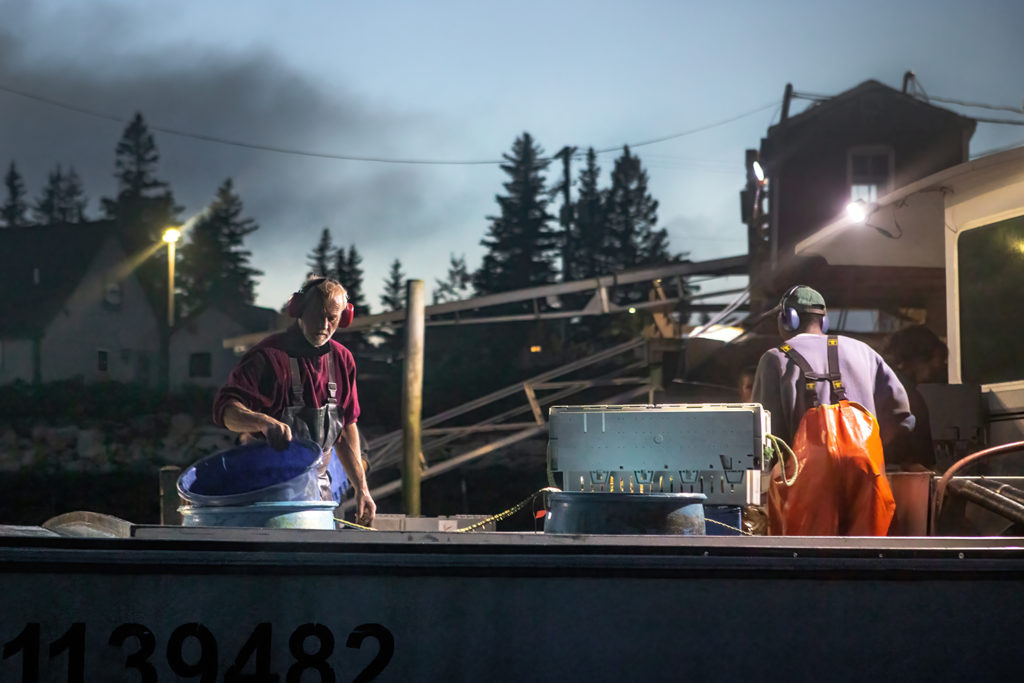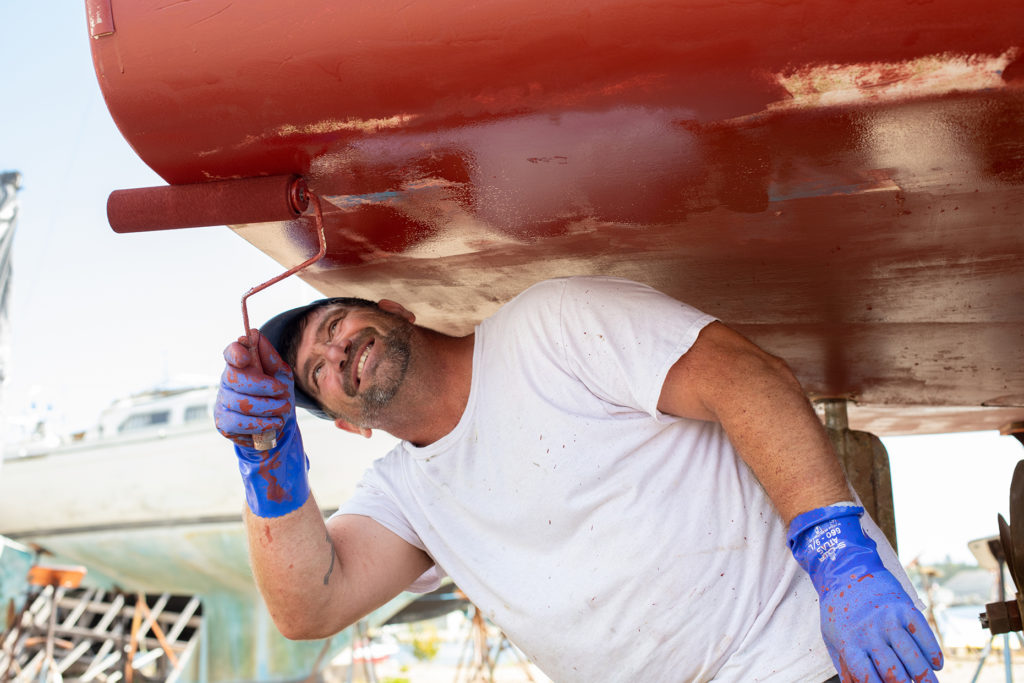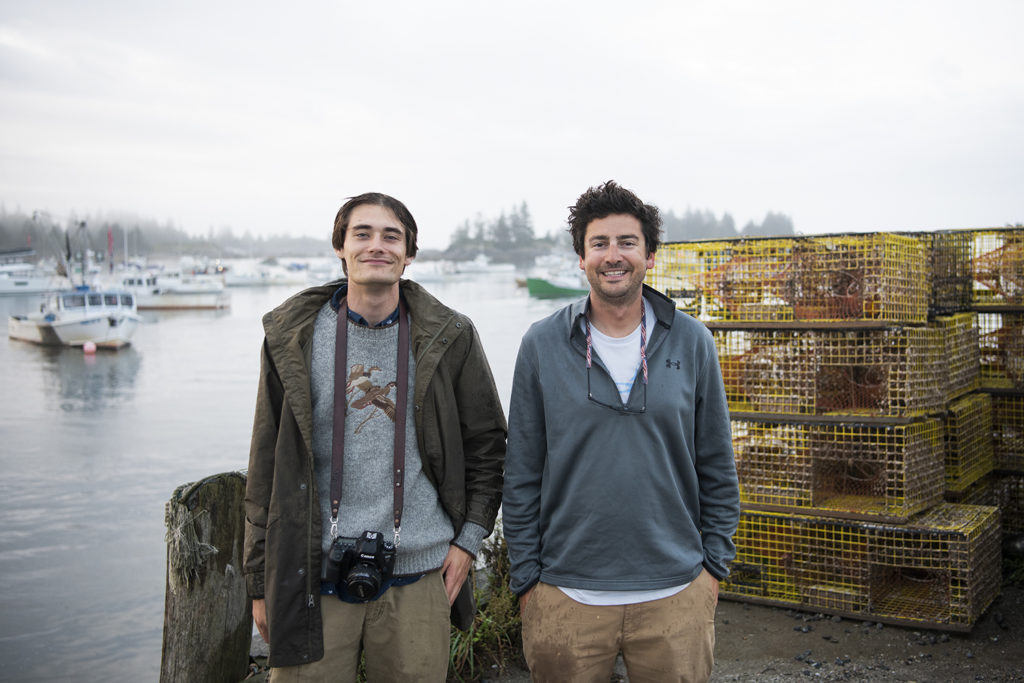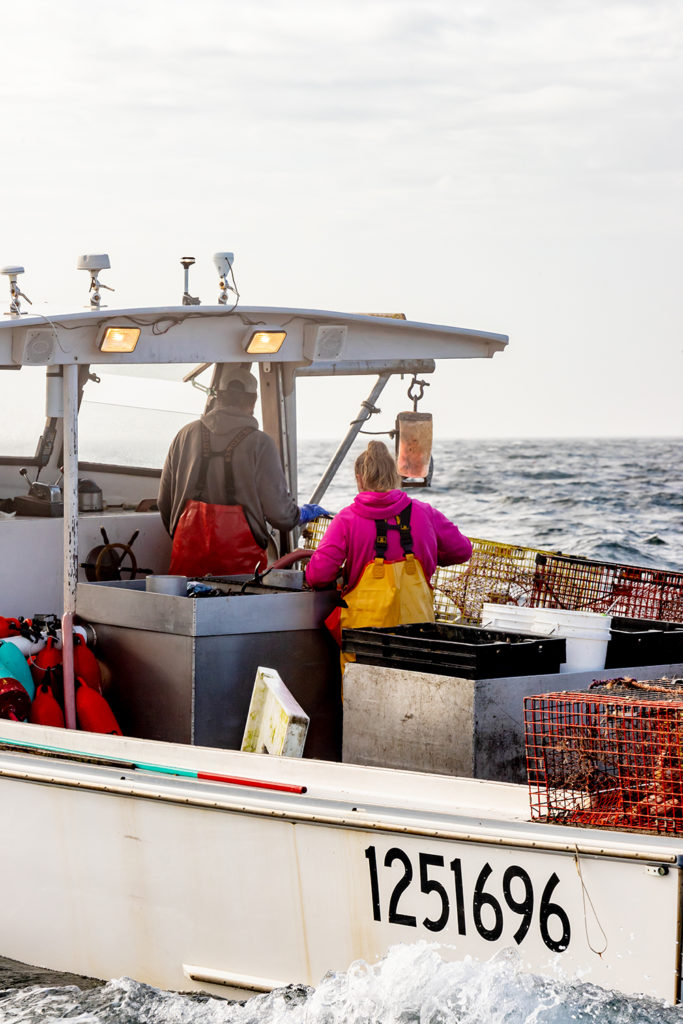
Photo: Jack Sullivan
I first discovered Jay Fleming back in 2017 shortly after I became the Island Institute’s multimedia storyteller. In this role, I found myself spending much of my time using cameras to document the coast of Maine, and I needed some inspiration on how documentarians before me have told the stories of fishermen and women, aquaculturists, and others who work on the water. My research led me to a contemporary counterpart who has been doing similar work for many years in the Chesapeake Bay region where the fisheries are centered on a different (but equally delicious) crustacean, the blue crab. Jay very quickly became one of my favorite photographers.
For four years, I admired Jay’s approach to making art out of such a rugged industry. I “liked” every post of his that appeared on my social media feed, and I applied some of his techniques to my own work when I could, but I never made a direct connection with him. When I drove south for a vacation in the Spring of 2021, I struck up conversation with some watermen I was photographing in Virginia, and, by coincidence, they knew Jay because he had photographed from their boat before.
“Cool,” I thought to myself, “I’m photographing the same fishermen that Jay Fleming photographed.”
As you can imagine, it was thrilling to find myself taking photos on the same lobster boat as him just five months later when he came up to Maine to host a workshop.
Having photographed the islands in the Chesapeake Bay for over 20 years, Jay has an intimate familiarity with the residents of certain island communities. One of these Chesapeake Bay islanders directed Jay to Vinalhaven, located in the center of a bay 500 miles away from his own. This friend of Jay’s, a blue crab fisherman from Tangier Island, has a pen pal correspondence with a lobster fisherman from Vinalhaven. The two fishermen have a lot in common despite the distance between them: their livelihoods, their religion, the trials and joys of island life. And now they both have had their portraits taken by island adventurer, Jay Fleming.
The intersection of nature and industry, the natural resources like blue crab and lobster that support the economies of our respective bays, and the spirit, drive, and authenticity of the people who make their living on the water—these are all inspirations that people like us share.
When I learned that Jay was in Maine, I reached out to him and subsequently received an invitation to his workshop. I was able to introduce him to some of the people I know on Vinalhaven, Jay was able to make some new friends, and of course we photographed them. One of the highlights was the morning we spent on the water with a lobsterman and his sternman hauling traps. I usually photograph close to shore or from the deck of a ferry, so this intimate perspective of where our seafood comes from was invaluable. The Atlantic Ocean is as intimidating as it is beautiful, and it was not a calm morning. Thankfully, I was too distracted by the fantastic photography to let the queasiness get the better of me. I did, however, make the mistake of trying to regain my balance by grabbing a ghost trap that was stored on deck (a trap that has been disconnected from its buoy and has sat at the bottom of the ocean for quite some time). The barnacles cut my “shedder palms” (slang for uncalloused hands—named after the soft lobsters who have recently shed their shells) but not so badly that it impacted my ability to handle a camera.
I did not step off onto the docks unscathed, but I did return with a memory card full of some of the most dynamic and active shots I have ever taken, and I learned new tips and tricks straight from someone who has logged countless hours photographing from the deck of a working boat: I picked up on the way Jay interacts with his photography subjects, I took note of the filters he uses, and I even tried out his technique where he dangles his camera inches from the surface of the water (this works best in calm seas). I also had the opportunity to spend quality time with other skilled photographers, regulars on Jay’s workshops in the Chesapeake.
These connections—fishermen and photographers alike—come naturally. Jay and I not only share a love for photography, but we also share a deep appreciation for the spirit of the coast. The intersection of nature and industry, the natural resources like blue crab and lobster that support the economies of our respective bays, and the spirit, drive, and authenticity of the people who make their living on the water—these are all inspirations that people like us share. While the fishermen pen pals have yet to meet in person, I am grateful for their friendship. Otherwise, Jay and I would never have had the opportunity to bond over our admiration for fishing communities across the Eastern Seaboard.
To learn more about photographer Jay Fleming and see samples of his work highlighting the islands of the Chesapeake Bay, visit his website here.

